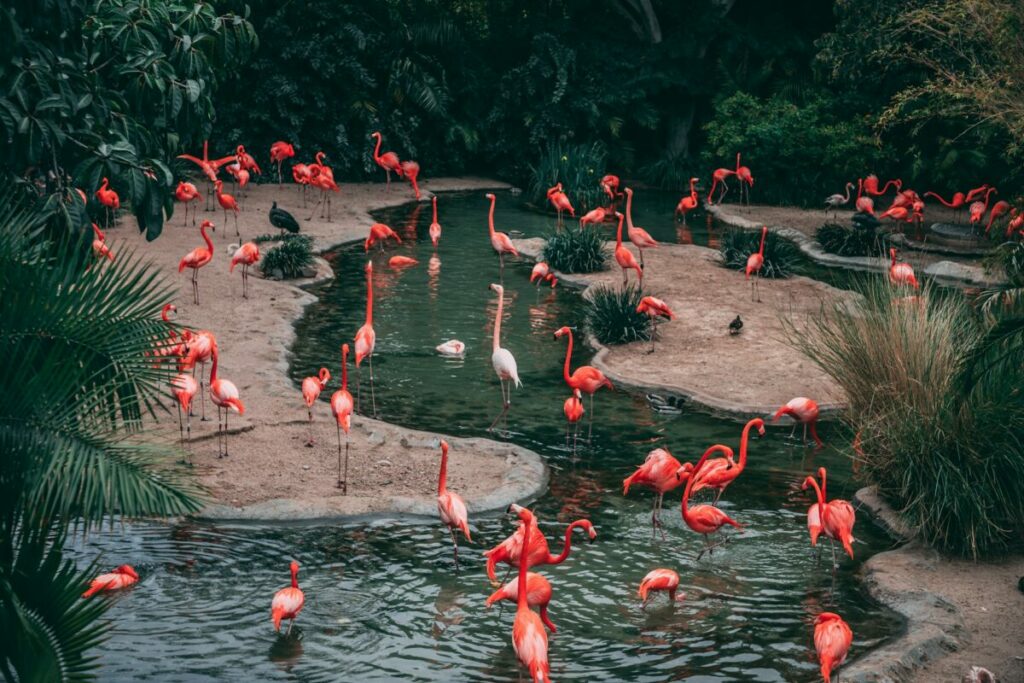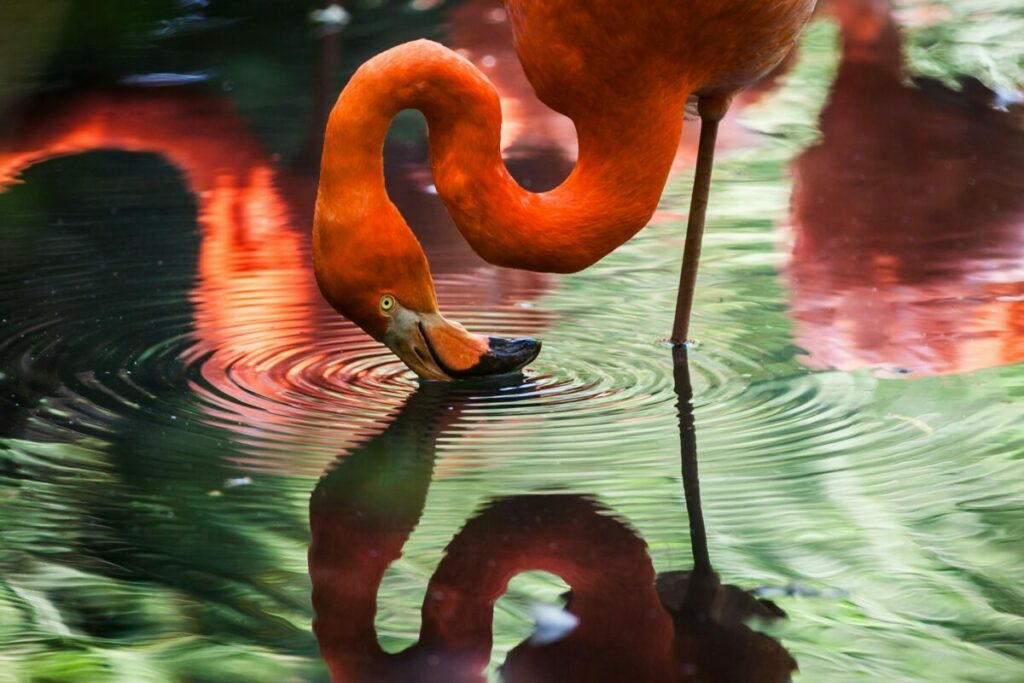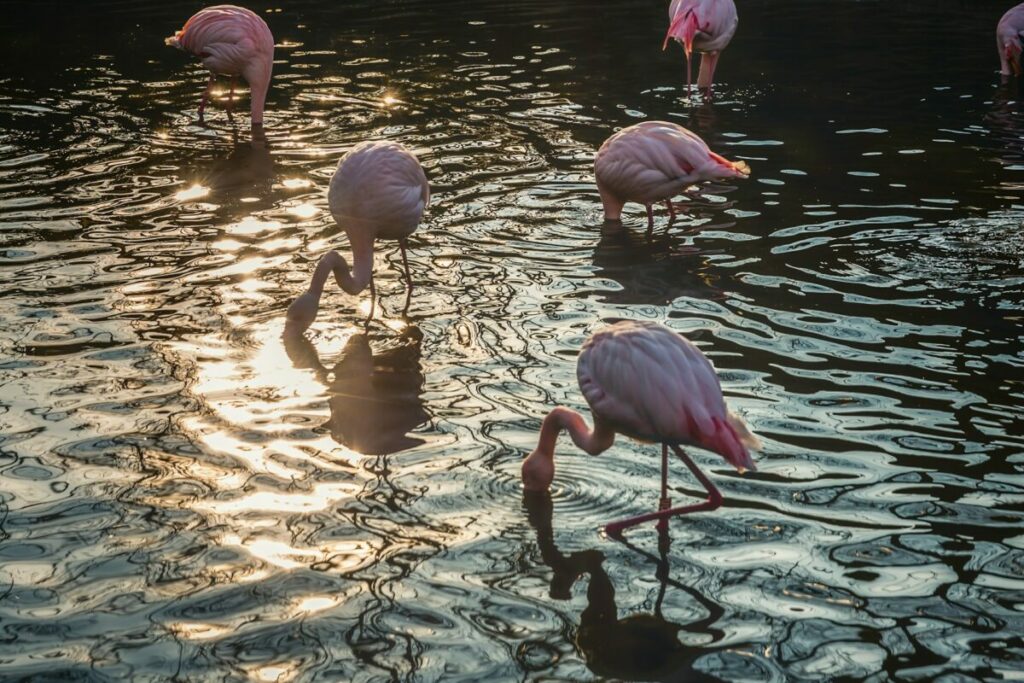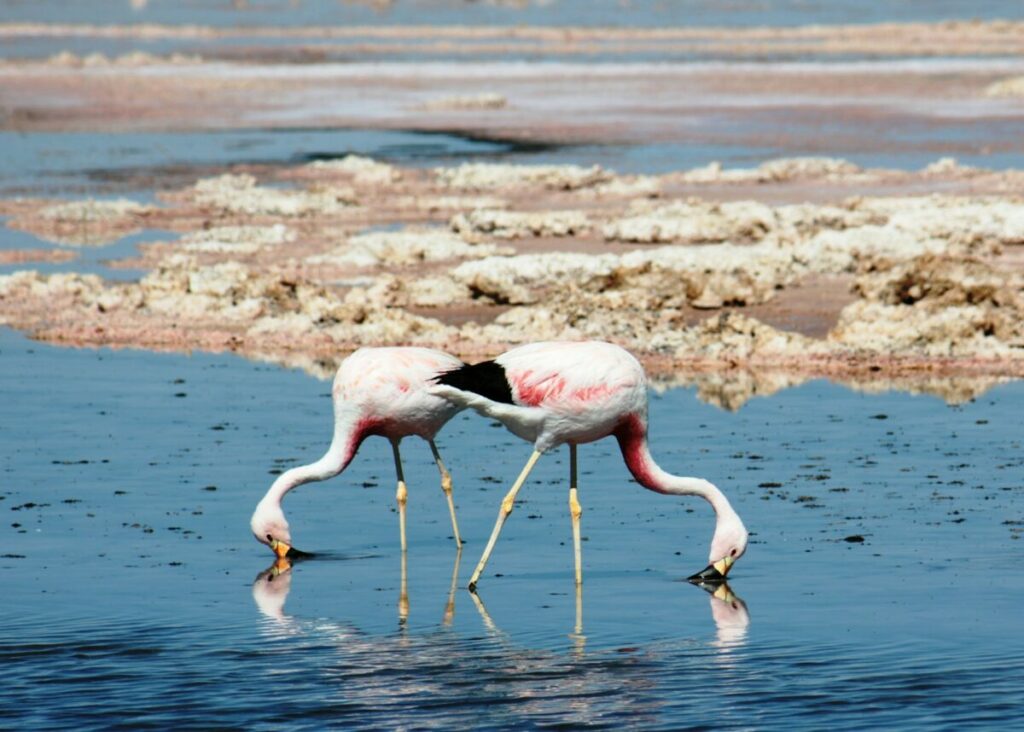Curious about “What Do Flamingos Eat”? Let’s dive into the dietary habits of these fantastic creatures. Flamingos, with their long legs and vibrant feathers, are instantly recognizable and adored by many. But have you ever wondered why they are pink? Or how they munch their meals? Well, let’s feast our minds on some knowledge!
Species and Habitat

Did you know there are five species of flamingos scattered across the globe? In Africa, the Americas, and the Caribbean, these birds have found their homes. While habitat varies from species to species, their habits unite them.
Typically, their living quarters are saltwater or brackish water environments, places like marshlands, shallow lakes, and lagoons. But more intriguing is that this also subtly answers the “What Do Flamingos Eat?” question. Their locales are a perfect setting for flamingos to enjoy their preferred feasts.
“What Do Flamingos Eat?” Exploring their Favourite Feast

Flamingos have a penchant for little aquatic creatures, shrimp being their top pick. Shrimp are high in beta-carotene, a nutrient also found in carrots. It’s this beta-carotene that gives flamingos their pinkish hue! So, recall the old adage, “You are what you eat”? It rings true for these beauties.
- Flamingos aren’t born pink: They are grey at birth and remain so for the first 2 to 3 years of their life.
- A diet deprived of shrimp turns a flamingo white instead of pink.
Remember, the more shrimp consumed, the pinker a flamingo becomes. Fascinating, isn’t it?
The Unique Feeding Method of Flamingos

The question of “What Do Flamingos Eat?” extends to how they eat, and believe us, it’s just as interesting. Flamingos are peculiar diners. They have a knack for feeding with their heads upside down, making a sweep and strain motion in shallow water. This method stirs up food items like algae, creating a perfect flamingo buffet.
Threats to the Flamingo Diet

Unfortunately, these wetlands integral to the flamingos’ diet are at risk due to human activities. Destruction of these marshlands drastically affects the future population of flamingos, as it not only threatens their food source but also their nesting areas.
To conclude, the unique diet of a flamingo involves shrimp-filled, upside-down feasts, which significantly contribute to the beloved, captivating pink colour we associate with these exceptional bird species. So next time someone wonders, “What Do Flamingos Eat?” you’ll know the delicious answer hidden in the question.
See Related: 10 Fascinating Flamingo Facts That Will Leave You Flamingo-flabbergasted!